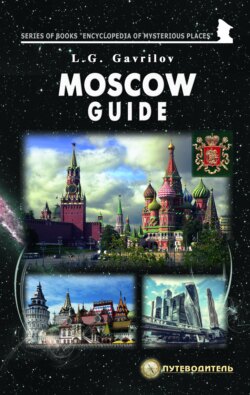Читать книгу Moscow guide - Леонид Гаврилов - Страница 3
Phenomena, anomalies, ancient history and wonders of Moscow
Ancient settlement Kuntsevskoe
Оглавление55° 43′ 11″ N
37° 26′ 26″ E
The Kuntsevo settlement is one of the oldest fortified settlements on the territory of Moscow. It is located on the western edge of the Kuntsevsky Park and occupies a high cape between two ravines. Earthen ramparts, ditches, terraces on the slopes have survived to this day. The early strata of the cultural layer (VI–V centuries BC–VII–VIII centuries AD) belong to the Dyakovo culture. During this period, there was a patriarchal settlement here. Excavations have uncovered the remains of residential and utility ground structures of a pillar structure, and a system of fortifications from the fence lines. Many finds characterize the economy and everyday life of pastoralists, hunters, early farmers and fishers. Found tools for casting non-ferrous metals, metal jewelry, products made of bone, clay, iron. In the XI–XIII centuries. Kuntsevo settlement was inhabited by Slavs-Vyatichi, engaged in arable farming and cattle breeding. Tools of labor, household and handicraft items, typical tribal ornaments were found.
In the XIII–XVI centuries. on the upper platform of the Kuntsevo settlement there was a wooden, then a stone church of the Intercession of the Mother of God, that on the Settlement. In the former's area of church cemetery, white stone carved gravestones, coins, metal crosses and icons were found here. The Moscow historian Ivan Yegorovich Zabelin, who visited the settlement in the 40s of the XX century, found a gravestone with the date: “Summer 7065, 1557 died…” Earlier slabs usually had only an ornament instead of a gravestone inscription. A settlement with a church on the territory of the Kuntsevo settlement was destroyed, probably during the Troubles in the early 17th century.
The place where the Kuntsevo settlement, since we considered it as a “pagan temple”, and several legends are associated with it. According to one of them, there was a church here, which without a trace went underground along with the cross – in one night. It depicts the Kuntsevo settlement in the painting by A.K. Savrasov “Autumn forest. Kuntsevo (Cursed Place)”, 1872. Until the twentieth century, the well-known “baba” (stone block), reminiscent of a human figure, remained a trace of pagan culture until the 20th century. Baba stood before in the middle of the peninsula in the hollow of an elm tree, then was transferred to the master's garden.
